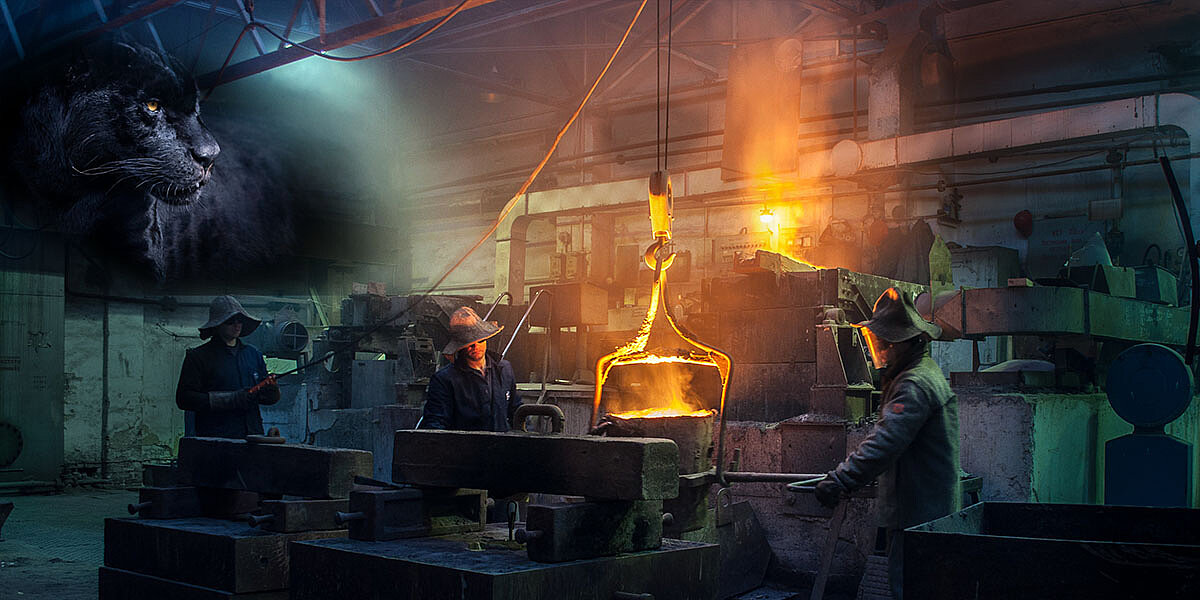Cat and pan

Every good housewife knows how to get the remains of the soup off the ladle: knock it against the soup pot. The potato pieces come off and fall back into the pot.
But how do you clean the dregs, also called lentils, from a ladle before refilling it? After all, the dirt should not end up in the new casting piece. Besides, the good piece is quite hot and potholders of this size make little sense.
The answer is: the same, but with the help of the cat! Of course, we don't mean the company's own cat, but the trolley on the crane that is used to move the ladle, which weighs about 60 tonnes, by rope. A quick side note: the cat itself is just 10 tonnes lighter.
Through a skilful manoeuvre by the crane operator, the ladle is made to swing and then driven with momentum against a baffle plate hanging on chains. The faster, the better the cleaning result, but also the greater the stress on the trolley, ladle and cleaning station, or the steel structure.
As this is a short-term, shock-like load, an analytical calculation of the occurring forces and the designer's imagination of how to calculate it quickly reach their limits.
This is a classic case for an explicit finite element calculation in which all relevant factors, including the propagation of the shock wave through the entire steel structure, can be calculated and evaluated.
Materials also have the peculiarity that they can withstand higher stresses during short-term loading. This is referred to as strain rate dependence.
So, in order not to waste steel for the steel construction (although you are sitting at the source here) and still spare the trolley, a good compromise can be found here, in which the crane, trolley, ladle and steel construction all fulfil their purpose for a long time, and the cleaning result also meets the demands of the steel cook. What our customer is interested in is above all the run-up distance at a given acceleration, which roughly corresponds to the jumping power of the trolley.
The movement patterns that result after impact are interesting. The crane hook draws filigree, flower-shaped patterns in the air, which you would not expect at all in such a rough environment.
Perhaps the practical example will give you food for thought on topics that you have not previously associated with FEM calculations. We are also looking forward to your special challenges. By the way, even the sloshing of a full ladle when accidentally hitting a forklift truck or the extraction of dust particles for absolute cleanliness could certainly be represented mathematically. Otherwise our CFD department would come away empty-handed...
The demolished forklift truck, on the other hand, is again a structural topic for the FEM.

Your Stefan Merkle
PS: Of course, I could have taken a picture of my own cat, but he's sure to run away at the noise level in a foundry (the coward!).